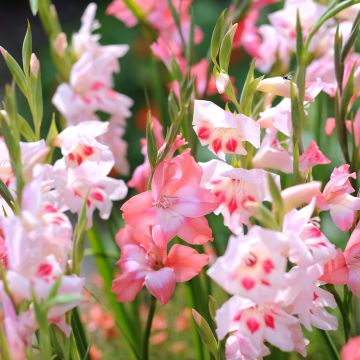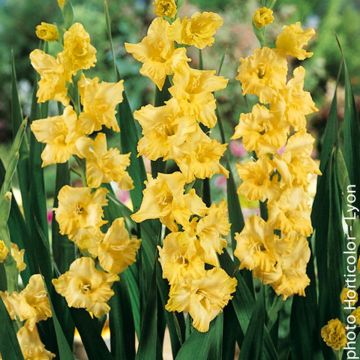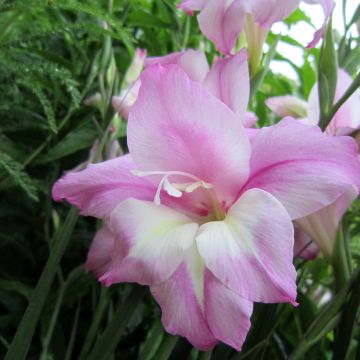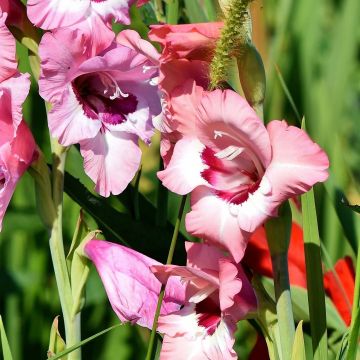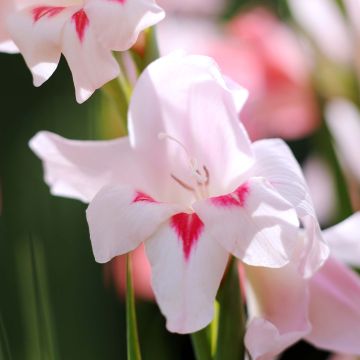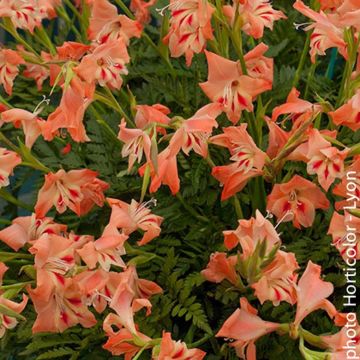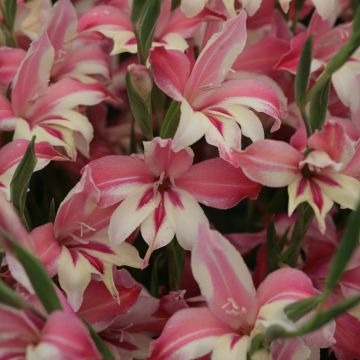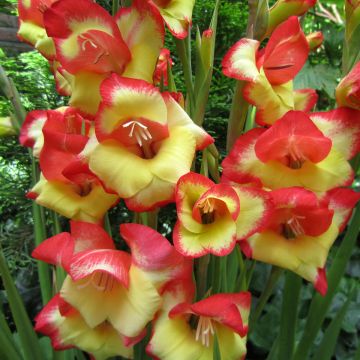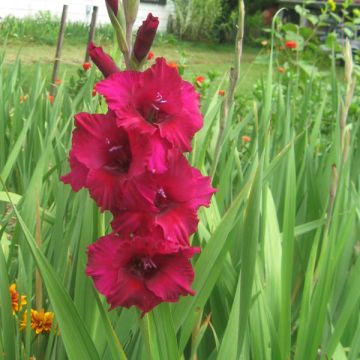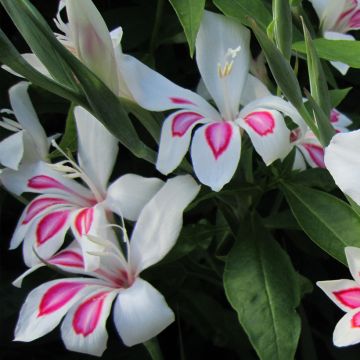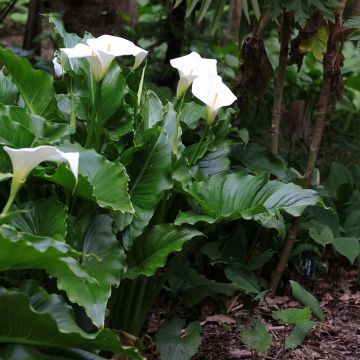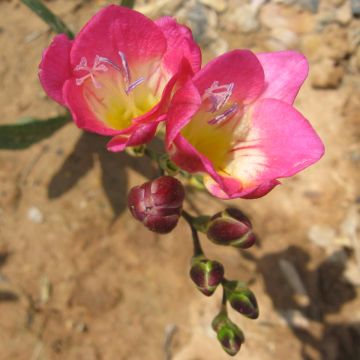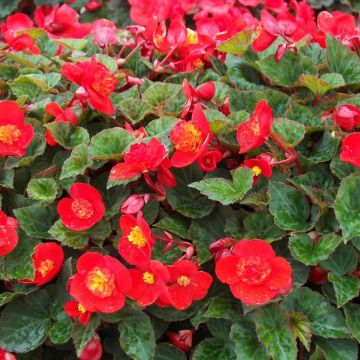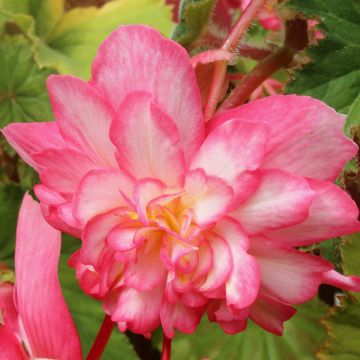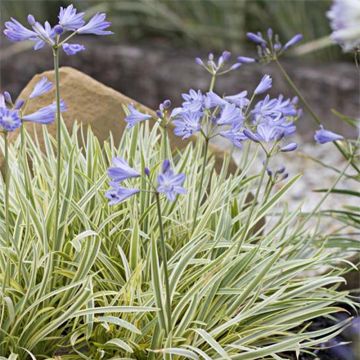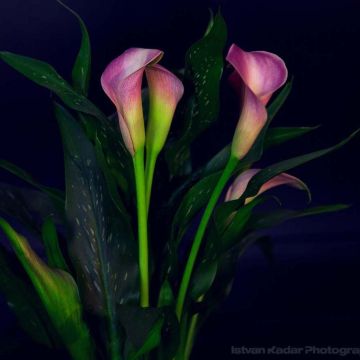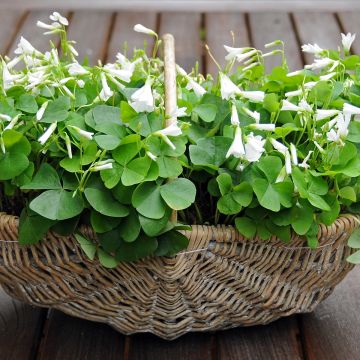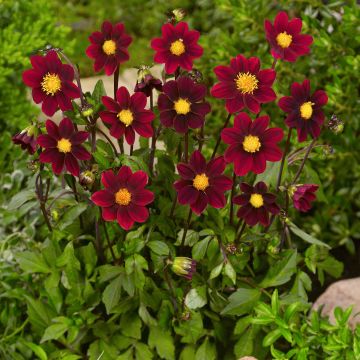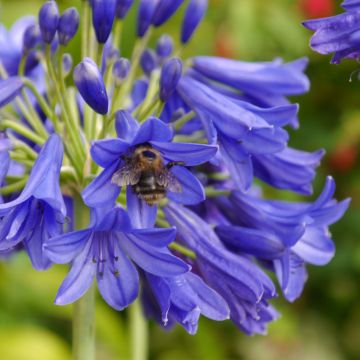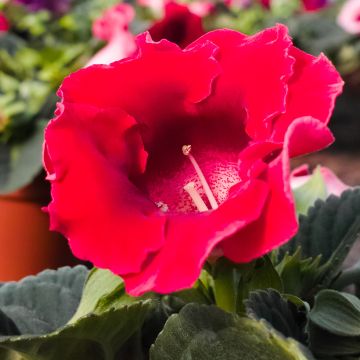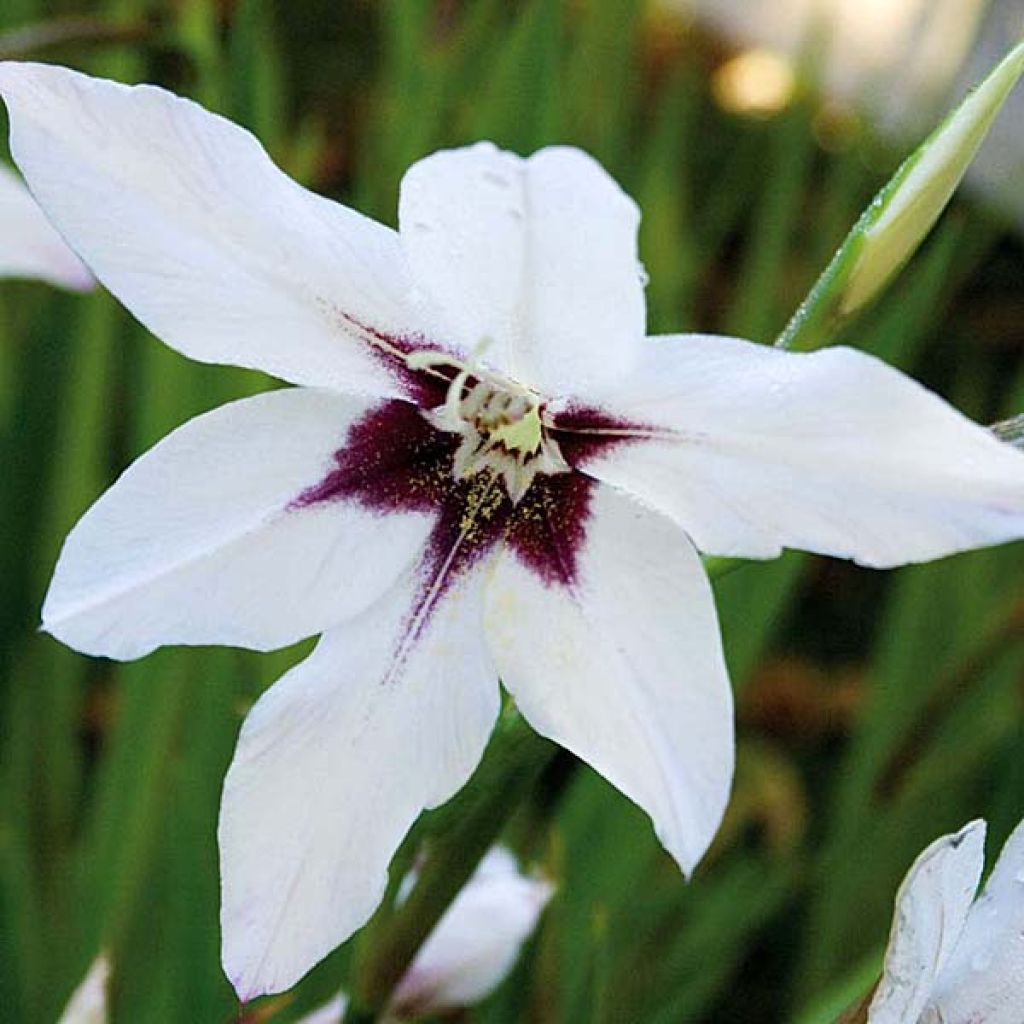

Gladiolus callianthus - Abyssinian gladiolus
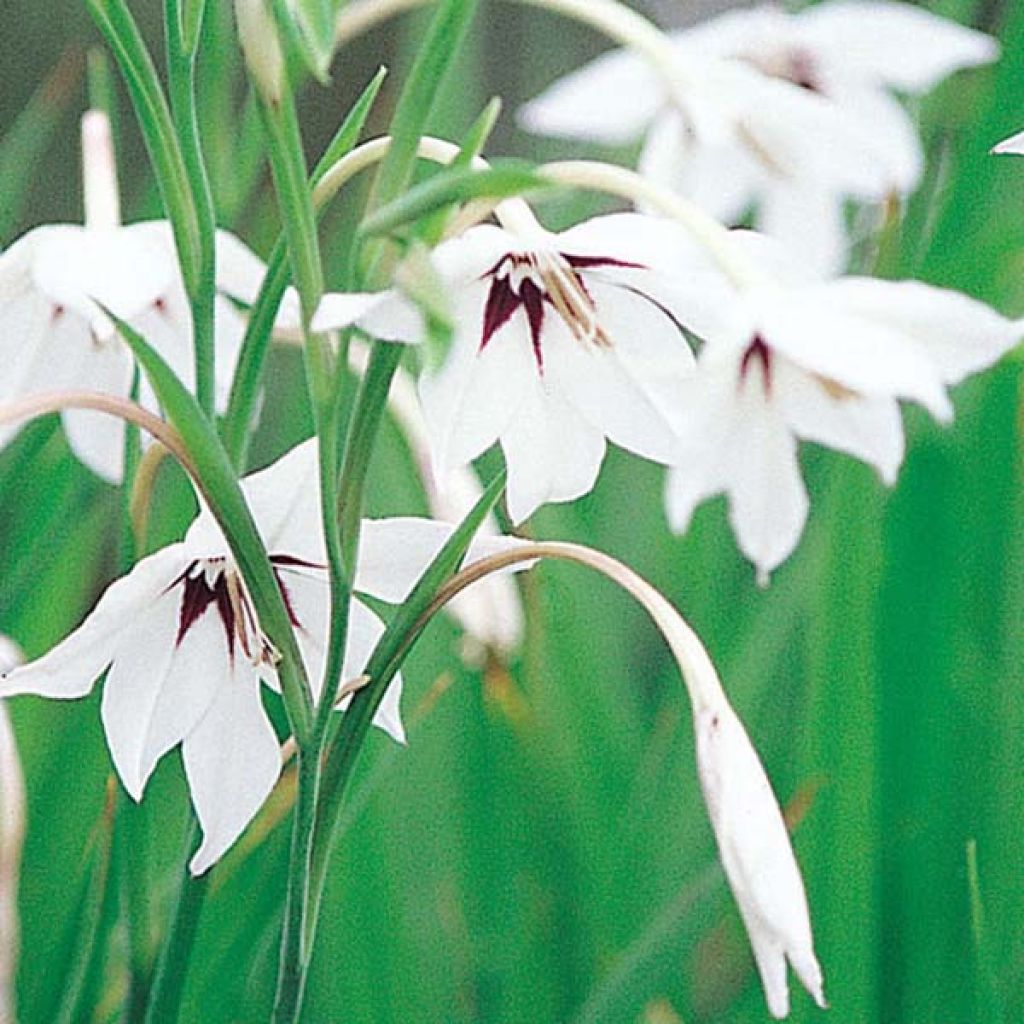

Gladiolus callianthus - Abyssinian gladiolus
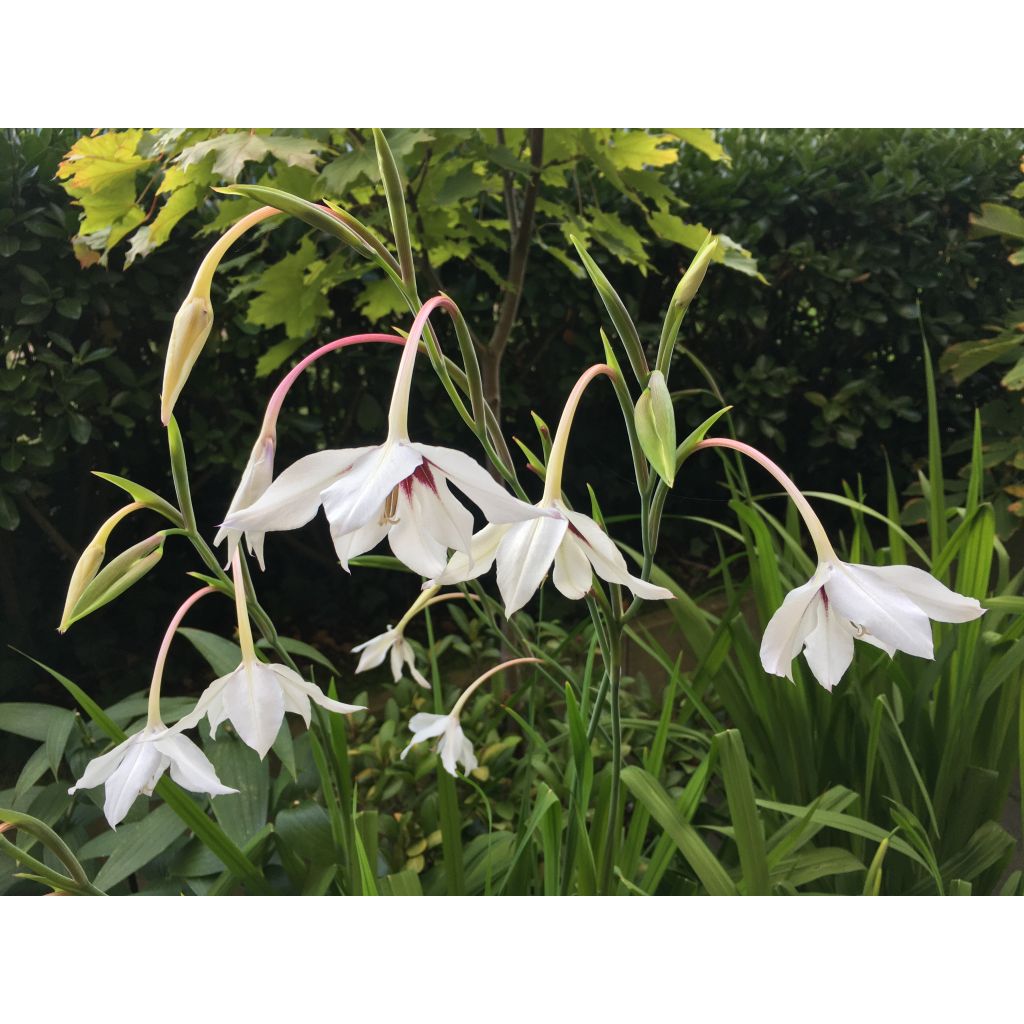

Gladiolus callianthus - Abyssinian gladiolus
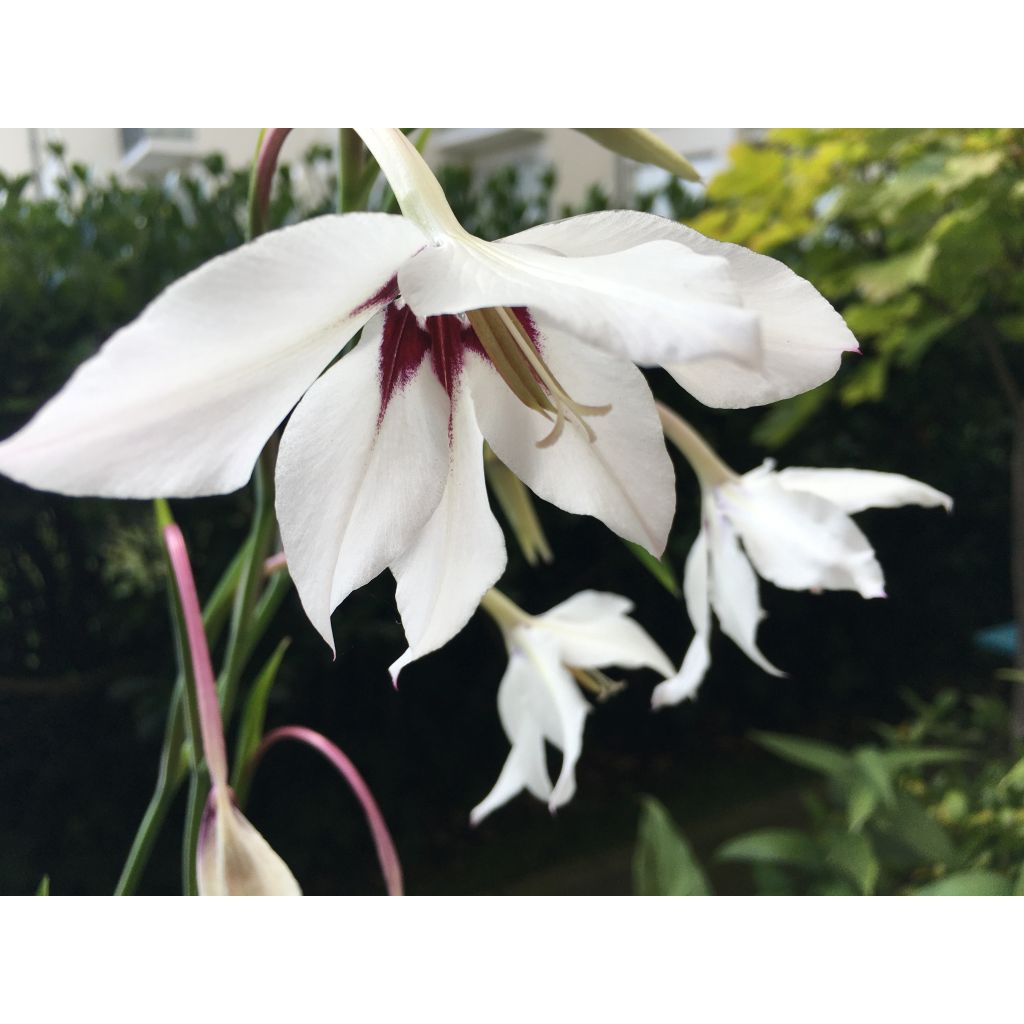

Gladiolus callianthus - Abyssinian gladiolus
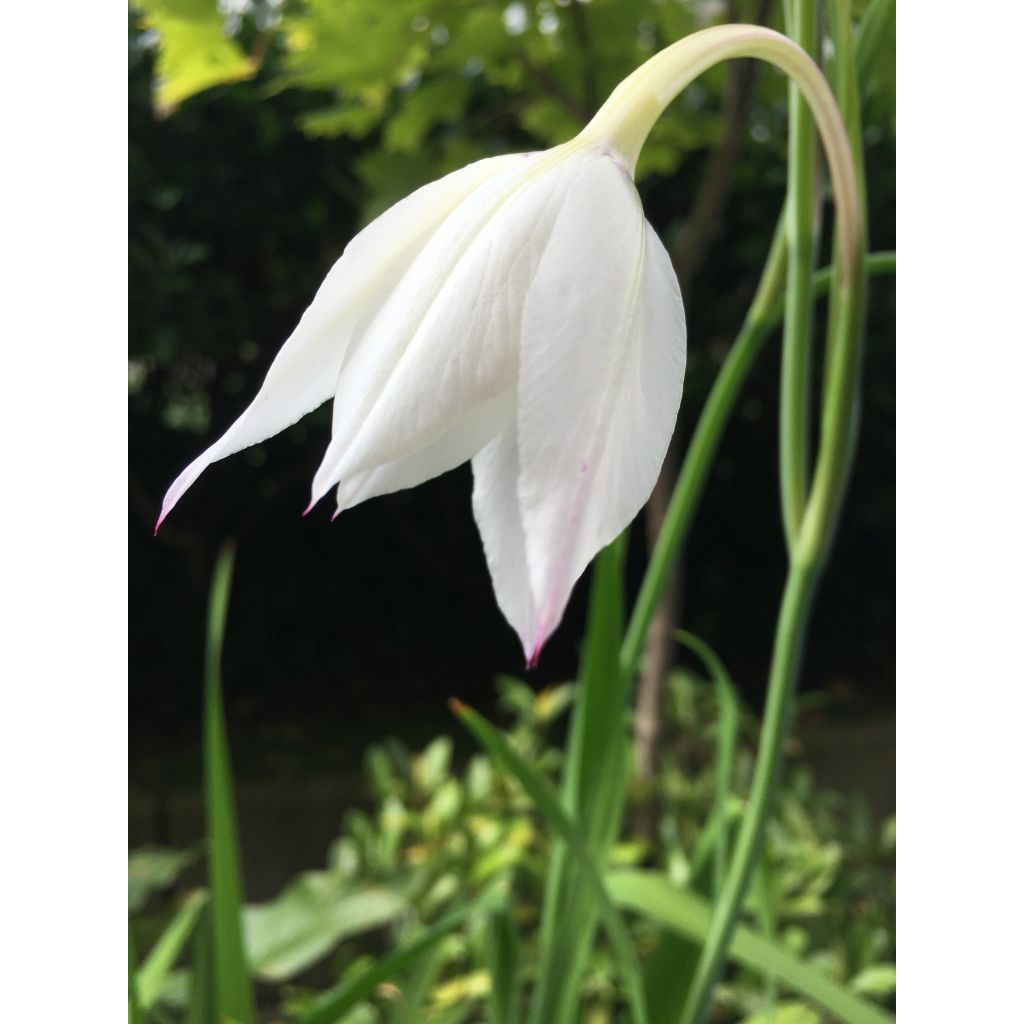

Gladiolus callianthus - Abyssinian gladiolus
Gladiolus callianthus - Abyssinian gladiolus
Gladiolus callianthus
Abyssinian gladiolus, Peacock orchid
This item cannot be shipped to the selected country
Delivery charge from €5.90
More information
Schedule delivery date,
and select date in basket
This plant carries a 6 months recovery warranty
More information
We guarantee the quality of our plants for a full growing cycle, and will replace at our expense any plant that fails to recover under normal climatic and planting conditions.
From €5.90 for pickup delivery and €6.90 for home delivery
Express home delivery from €8.90.

Does this plant fit my garden?
Set up your Plantfit profile →
Description
Gladiolus callianthus (formerly known as Acidanthera murielae) is an elegant cormous plant that may not immediately come to mind when thinking of brightening up our gardens from late summer to autumn. While its remarkably colourful horticultural cousins enter dormancy, this wild gladiolus with its non-rigid habit develops its flowering stems. The stems bear several graceful funnel-shaped flowers. They are white with a handsome purple heart. The flowers might be fairly small, but they are pleasantly fragrant and highly valued in bouquets. It is not very hardy, but is easy to grow in fertile, moist, and well-drained soil. It should be stored indoors during winter.
The Abyssinian gladiolus belongs to the Iridaceae family. It is native to East Africa, specifically the Horn of Africa. Abyssinia is a region located north of present-day Ethiopia, east of Sudan and Eritrea. This botanical species is an ancestor of our current gladioli. It is a perennial herbaceous plant equipped with a storage organ called a corm, which is a kind of globose bulb. In spring, as soon as temperatures are warm enough, the corm develops long linear sheathing leaves, resembling a sword, measuring about 50cm (20in). They are light green, with parallel veins, and are somewhat stiff. Flowering occurs late under most climates, from August to October (depending on the regions). Flowering stems reaching a height of 80cm (32in) emerge from the foliage. Each stem bears 8 to 10 flowers along almost its entire length. The star-shaped blooms are 5cm (2in) in diameter, with a long tubular calyx. They consist of 6 tepals, 3 of which are larger and overlapping, 2 lateral, and 1 superior. The tepals are white, with purple markings at the base. The flowers' fragrance is more pronounced in the evening. This nectar-rich flowering is popular with pollinating insects. Its corm can tolerate light frosts, around -5°C (23°F), in dry soil during winter. The corms should be dug up once the foliage has turned yellow, then stored in a dry and frost-free place during winter.
Gladiolus callianthus is easy to grow, both in the ground and in pots. It is an extremely graceful gladiolus that pairs well with grasses such as pennisetum, eragrostis, or stipa, as well as with simple annuals like centaureas or nigellas, in a slightly wild and well-drained flower bed. This plant has a natural charm that is far from the rigid and somewhat kitschy appearance of its Dutch cousins. It deserves more than a row of stakes along the edge of a vegetable garden! Plant it in groups of 20 alongside gauras and linarias, for example. It can also bring life to a border of irises, which may look a bit sad after their spring blooming. Its somewhat stiff foliage can be cleverly hidden by low-growing plants with light foliage, such as nepeta or perennial geraniums.
Report an error about the product description
Plant habit
Flowering
Foliage
Botanical data
Gladiolus
callianthus
Iridaceae
Abyssinian gladiolus, Peacock orchid
East Africa
Other Gladioli
Planting and care
Plant Abyssinian gladiolus corms in spring. Choose a sunny, sheltered location, protected from the wind. Plant them under 8 to 10cm (3 to 4in) of well-drained soil. They appreciate horn and dried blood, but they fear fertiliser and manure. Make sure the plants are regularly watered during the growth and flowering period. In hot and very mild climates, the corms can be planted in autumn: they will bloom in spring and go dormant in summer. They are not very hardy, but can withstand brief frosts of around -5°C (23°F) in dry soil. In cold regions, the corms should be dug up before the first frost. Store them in turf in a well-ventilated, frost-free room. You can also grow them in pots that can be protected from the cold (20 bulbs per 20 to 22cm (8 to 9in) pot).
Planting period
Intended location
Care
-
, onOrder confirmed
Reply from on Promesse de fleurs
Bulbs to grow in pots
Haven't found what you were looking for?
Hardiness is the lowest winter temperature a plant can endure without suffering serious damage or even dying. However, hardiness is affected by location (a sheltered area, such as a patio), protection (winter cover) and soil type (hardiness is improved by well-drained soil).

Photo Sharing Terms & Conditions
In order to encourage gardeners to interact and share their experiences, Promesse de fleurs offers various media enabling content to be uploaded onto its Site - in particular via the ‘Photo sharing’ module.
The User agrees to refrain from:
- Posting any content that is illegal, prejudicial, insulting, racist, inciteful to hatred, revisionist, contrary to public decency, that infringes on privacy or on the privacy rights of third parties, in particular the publicity rights of persons and goods, intellectual property rights, or the right to privacy.
- Submitting content on behalf of a third party;
- Impersonate the identity of a third party and/or publish any personal information about a third party;
In general, the User undertakes to refrain from any unethical behaviour.
All Content (in particular text, comments, files, images, photos, videos, creative works, etc.), which may be subject to property or intellectual property rights, image or other private rights, shall remain the property of the User, subject to the limited rights granted by the terms of the licence granted by Promesse de fleurs as stated below. Users are at liberty to publish or not to publish such Content on the Site, notably via the ‘Photo Sharing’ facility, and accept that this Content shall be made public and freely accessible, notably on the Internet.
Users further acknowledge, undertake to have ,and guarantee that they hold all necessary rights and permissions to publish such material on the Site, in particular with regard to the legislation in force pertaining to any privacy, property, intellectual property, image, or contractual rights, or rights of any other nature. By publishing such Content on the Site, Users acknowledge accepting full liability as publishers of the Content within the meaning of the law, and grant Promesse de fleurs, free of charge, an inclusive, worldwide licence for the said Content for the entire duration of its publication, including all reproduction, representation, up/downloading, displaying, performing, transmission, and storage rights.
Users also grant permission for their name to be linked to the Content and accept that this link may not always be made available.
By engaging in posting material, Users consent to their Content becoming automatically accessible on the Internet, in particular on other sites and/or blogs and/or web pages of the Promesse de fleurs site, including in particular social pages and the Promesse de fleurs catalogue.
Users may secure the removal of entrusted content free of charge by issuing a simple request via our contact form.
The flowering period indicated on our website applies to countries and regions located in USDA zone 8 (France, the United Kingdom, Ireland, the Netherlands, etc.)
It will vary according to where you live:
- In zones 9 to 10 (Italy, Spain, Greece, etc.), flowering will occur about 2 to 4 weeks earlier.
- In zones 6 to 7 (Germany, Poland, Slovenia, and lower mountainous regions), flowering will be delayed by 2 to 3 weeks.
- In zone 5 (Central Europe, Scandinavia), blooming will be delayed by 3 to 5 weeks.
In temperate climates, pruning of spring-flowering shrubs (forsythia, spireas, etc.) should be done just after flowering.
Pruning of summer-flowering shrubs (Indian Lilac, Perovskia, etc.) can be done in winter or spring.
In cold regions as well as with frost-sensitive plants, avoid pruning too early when severe frosts may still occur.
The planting period indicated on our website applies to countries and regions located in USDA zone 8 (France, United Kingdom, Ireland, Netherlands).
It will vary according to where you live:
- In Mediterranean zones (Marseille, Madrid, Milan, etc.), autumn and winter are the best planting periods.
- In continental zones (Strasbourg, Munich, Vienna, etc.), delay planting by 2 to 3 weeks in spring and bring it forward by 2 to 4 weeks in autumn.
- In mountainous regions (the Alps, Pyrenees, Carpathians, etc.), it is best to plant in late spring (May-June) or late summer (August-September).
The harvesting period indicated on our website applies to countries and regions in USDA zone 8 (France, England, Ireland, the Netherlands).
In colder areas (Scandinavia, Poland, Austria...) fruit and vegetable harvests are likely to be delayed by 3-4 weeks.
In warmer areas (Italy, Spain, Greece, etc.), harvesting will probably take place earlier, depending on weather conditions.
The sowing periods indicated on our website apply to countries and regions within USDA Zone 8 (France, UK, Ireland, Netherlands).
In colder areas (Scandinavia, Poland, Austria...), delay any outdoor sowing by 3-4 weeks, or sow under glass.
In warmer climes (Italy, Spain, Greece, etc.), bring outdoor sowing forward by a few weeks.

































